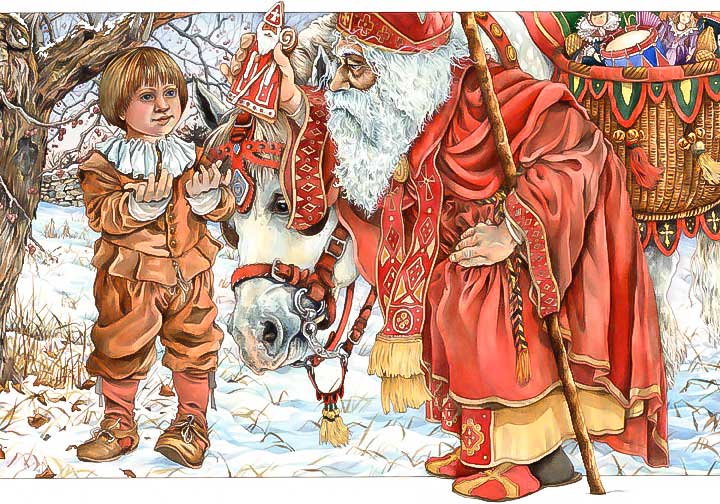December 6th has long been a special day because it is the birth day of our daughter. However, I learned that it is also a special day for many folks, particularly in Germany, because it is Saint Nicholas Day.
You can read about Saint Nicholas
here and
here, but the
Saint Nicholas Center website is completely dedicated to Nicholas and Saint Nicholas Day. Here are a couple of snippets from the site:
The true story of Santa Claus begins with Nicholas, who was born during the
third century in the village of Patara. At the time the area was Greek and is
now on the southern coast of Turkey. His wealthy parents, who raised him to be a
devout Christian, died in an epidemic while Nicholas was still young. Obeying
Jesus' words to "sell what you own and give the money to the poor," Nicholas
used his whole inheritance to assist the needy, the sick, and the suffering. He
dedicated his life to serving God and was made Bishop of Myra while still a young man. Bishop Nicholas
became known throughout the land for his generosity to the those in need, his
love for children, and his concern for sailors and ships.
Under the Roman Emperor Diocletian, who ruthlessly persecuted
Christians, Bishop Nicholas suffered for his faith, was exiled and imprisoned.
The prisons were so full of bishops, priests, and deacons, there was no room for
the real criminals—murderers, thieves and robbers. After his release, Nicholas
attended the Council of Nicaea in AD 325. He died December
6, AD 343 in Myra and was buried in his cathedral church, where a unique relic, called manna, formed in his
grave. This liquid substance, said to have healing powers, fostered the growth
of devotion to Nicholas. The anniversary of his death became a day of
celebration, St. Nicholas Day, December 6th (December 19
on the Julian Calendar).
In Roman Catholic areas of southern Germany, such as Bavaria, Sankt
Nikolaus still comes as a bishop with flowing beard and a bishop's miter and staff. Houses
are thoroughly cleaned and children clean and polish their shoes or boots in
preparation for the saint's visit. On the evening before St. Nicholas Day,
children put letters to the good saint along with carrots or other food for his
white horse or donkey on a plate or in their shoes. These are left outside,
under the bed, beside a radiator, or on a windowsill in hopes of finding goodies
from St. Nicholas the next morning. During the night Sankt Nikolaus goes from
house to house carrying a book in which all the children's deeds are written. If
they have been good, he fills their plate, shoe or boot with delicious fruits,
nuts and candies. If not, they may find potatoes, coal, or twigs.

1 comment:
At lunchtime on Wednesday, we heard the owner of the Essighaus repeat the claim that Santa wears red and white because of Coca Cola....well, like all urban legends, there is a smidgen of truth in the claim, with the emphais on smidgen.
The place that I usually start for the word on urban legends is snopes.com who flat out say "False" and provide a variety of evidence to support their decision.
http://www.snopes.com/holidays/christmas/santa/cocacola.asp
This is another site that has several things one is supposed to know about Christmas - really liked their blaming the Germans for the tree mess :-)
http://www.nzherald.co.nz/lifestyle/news/article.cfm?c_id=6&objectid=10549639
Post a Comment